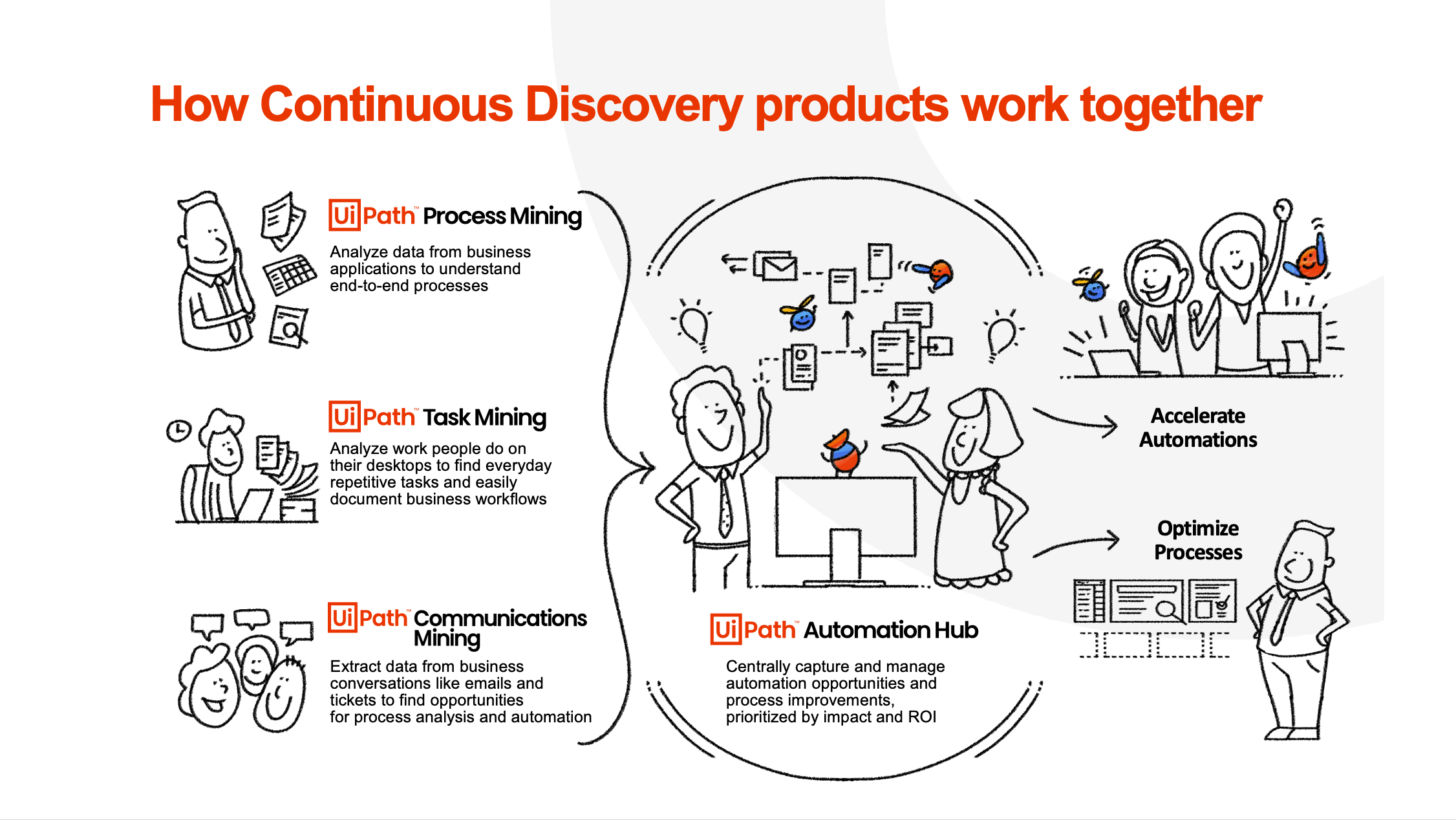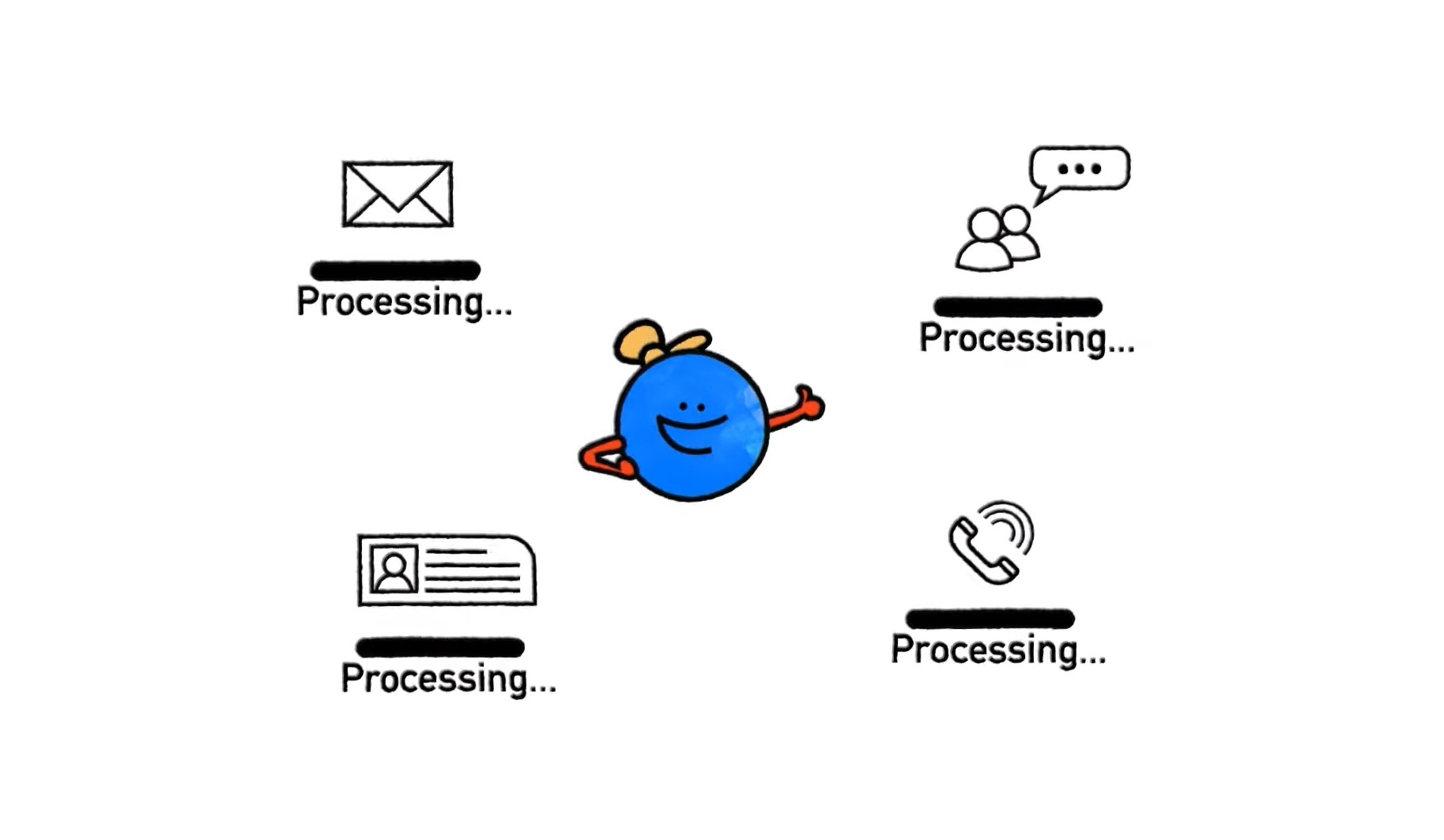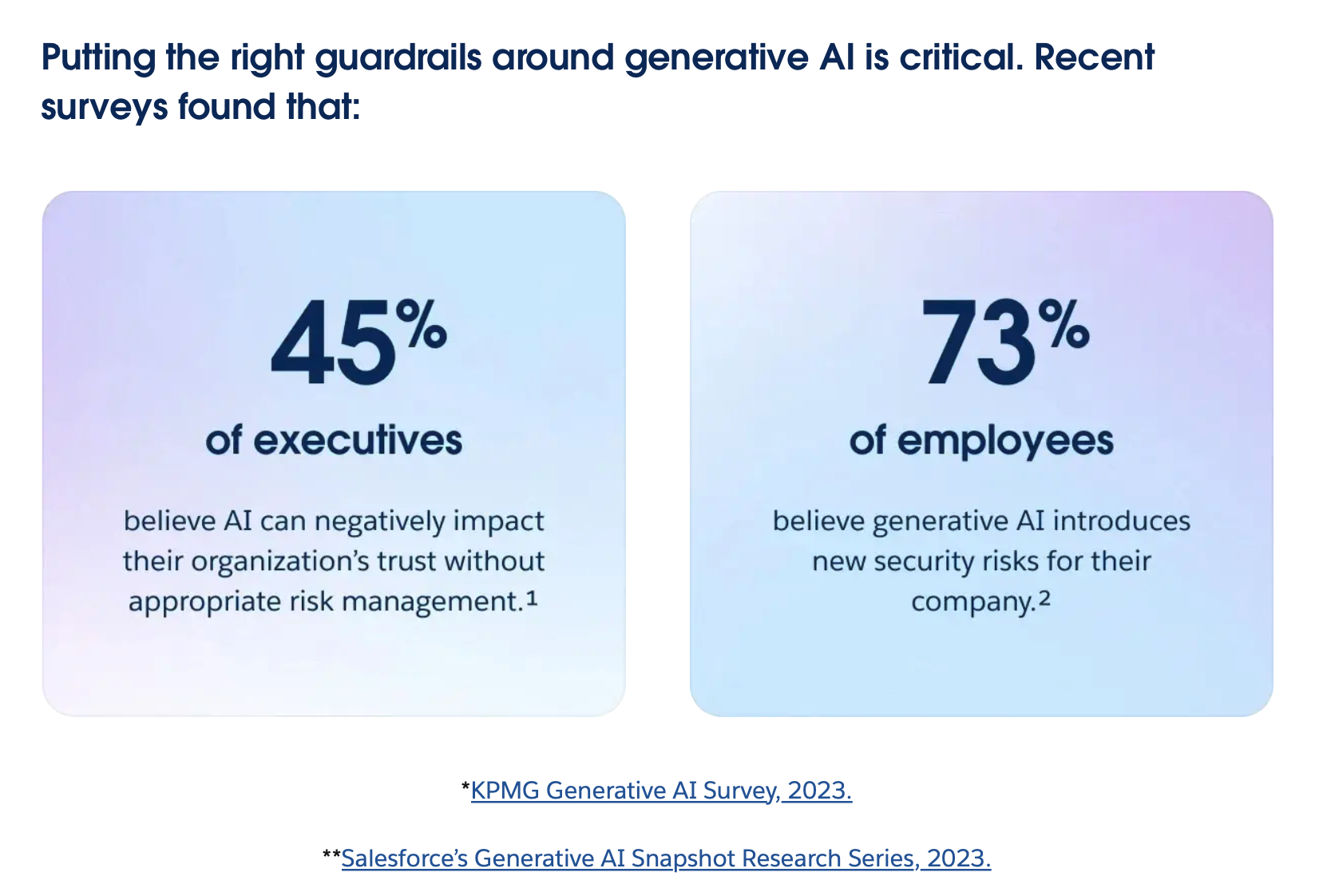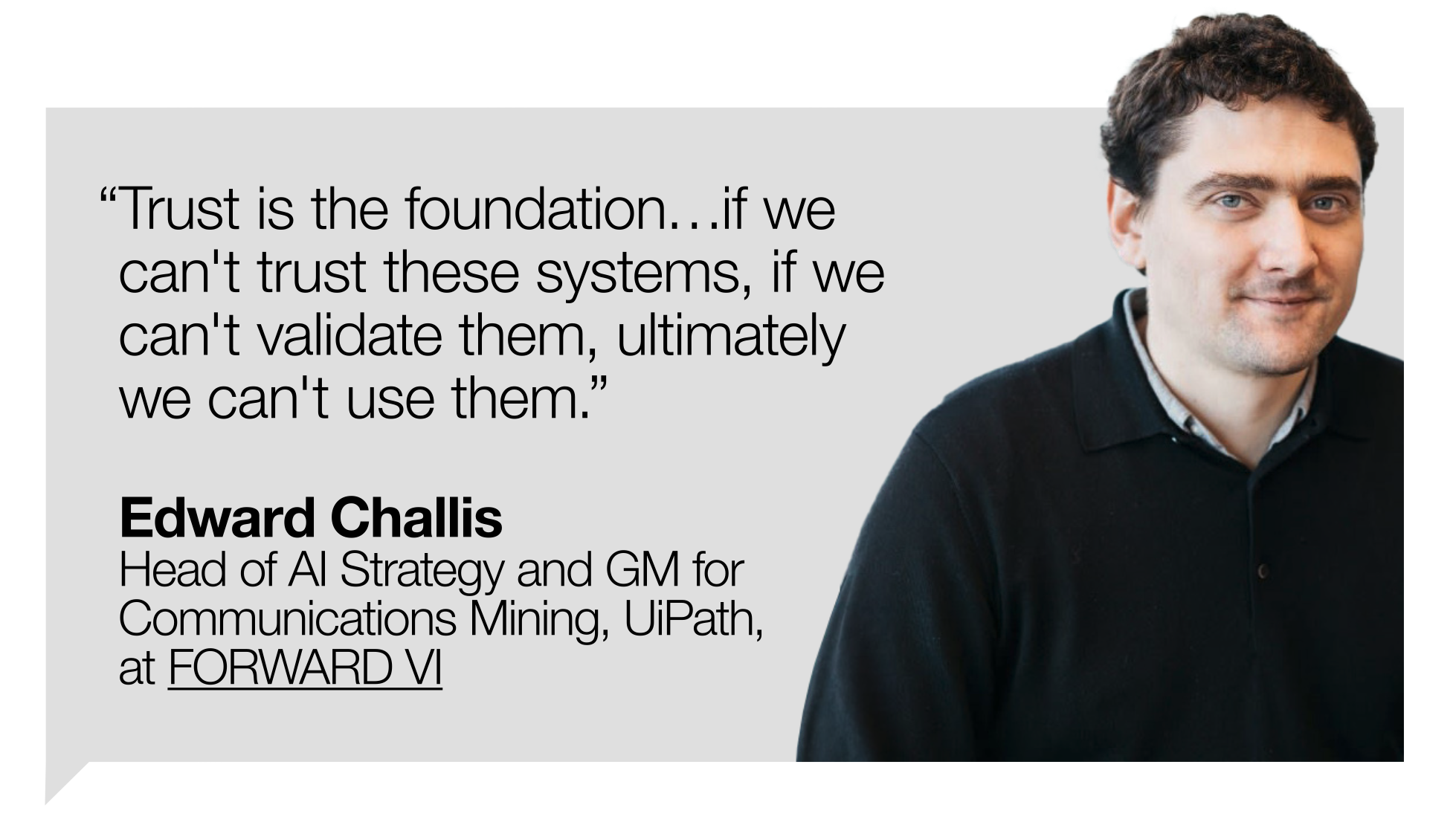3 common barriers to AI adoption and how to overcome them
Share at:

There’s a growing consensus about the need for businesses to embrace AI. McKinsey estimated that generative AI could add between $2.6 to $4.4 trillion in value annually, and Deloitte’s “State of AI in the Enterprise” report found that 94% of surveyed executives “agree that AI will transform their industry over the next five years.” The technology is here, it’s powerful, and innovators are finding new use cases for it every day.
But despite its strategic importance, many companies are struggling to make progress on their AI agendas. Indeed, in that same report, Deloitte estimated that 74% of companies weren’t capturing sufficient value from their AI initiatives.
Nevertheless, companies sitting on the sidelines can’t afford to wait any longer. As reported by Bain & Company, a “larger wedge” is being driven “between those organizations that have a plan [for AI] and those that don’t—amplifying advantage and placing early adopters into stronger positions.”
So, what’s holding companies back from capturing AI’s value? While there are plenty of barriers to AI adoption, from our experience, three tend to be the most common causes for concern. Here’s what those barriers entail, and why leveraging automation as the ‘muscle’ that allows you to operationalize the ‘brain’ of AI is the most effective approach to realize value from the technology.
Three common barriers to AI adoption
1. Lack of a roadmap for capturing value from AI
In the past few years, executives have been inundated with headlines proclaiming the transformative power of AI. Most recognize the need to implement AI in their organizations but lack a clear strategy for quickly realizing tangible value from it. In a recent McKinsey survey, a significant portion of respondents (39%) cited that strategy, adoption, and scaling issues were their biggest roadblocks to capturing value from AI.
While there’s a lot that goes into building out an AI strategy and roadmap, a critical first step is to identify the most valuable and transformative AI use cases on which to focus. This is an area where many companies hit a stumbling block: they don’t know enough about processes at a granular level to begin to assess them, let alone quantify the potential benefits of inserting AI at critical junctures in those processes.
But there’s a way around this roadblock. Rather than manually sifting through countless business workflows, process discovery capabilities offer a more efficient way for organizations to pinpoint their most attractive AI opportunities.
Here are some of the ways you can leverage process discovery:
Process mining
Process mining analyzes the digital footprints left by your organization’s software to understand your business processes from start to finish. It uses these footprints to create a detailed process map, then identifies the parts of the workflow where AI can add the most value.

Imagine a package moving from order placement to delivery. An online ordering system, inventory management software, and various other applications are involved in its journey. Process mining might discover that sluggish inventory updates are a root cause of downstream shipping delays—something that generative AI and automation can address.
Task mining
Task mining focuses on employees’ desktop activities to see where improvements in a specific activity can be made. By capturing all the variations of a task and merging them into a comprehensive task graph, task mining can identify bottlenecks and other inefficiencies.
For instance, we’ve used UiPath Task Mining to examine the different ways UiPath employees fill out expense reports. Task Mining mapped out the process, highlighting redundancies and bottlenecks. Knowing where these issues lay allowed us to subsequently address them with automation.
Communications mining
Communications mining employs powerful AI, including large language models (LLMs), to process and understand unstructured data in emails, Slack messages, tickets, customer call transcripts, and more. This information can be used to, for instance, better understand customers and their needs, look at the processes serving them, and reveal opportunities for high ROI use cases. Business leaders can then use these insights to make informed decisions about where to deploy AI.

British Airways unlocked significant value by using UiPath Communications Mining, via the UiPath Business Automation Platform, to help manage hotel inventory within its trip-planning division. With hotels in more than 100 countries and no standard inventory format, staff were spending too much time sifting through emails and manually updating availability.
Communications Mining transformed this process by automatically extracting key information such as room types, hotel names, and dates from emails, then feeding that information into an email-generating automation. This capability, along with others in the UiPath Platform, saved the group countless hours of manual data entry.
Read the e-book: The Ultimate Guide to Communications Mining
These process discovery capabilities take the guesswork out of AI implementation, giving companies a specific set of use cases that will deliver immediate value. These tools can benefit all organizations, regardless of their AI experience—those just starting out can identify low-hanging fruit, while more mature companies can take their AI and automation efforts to the next level.
If you’re trying to figure out how AI can add value to your organization, or just don’t know where to start, process discovery tools can help you create a blueprint for achieving tangible results quickly and efficiently.
2. Limited AI skills and expertise
A lack of in-house AI expertise has many executives apprehensive about an enterprise-wide rollout. In fact, it was the most cited barrier in IBM’s Global AI Adoption Index 2023. Bain & Company also reported that, “Over 50% of respondents highlight a ‘lack of internal expertise or knowledge’ as their most significant impediment [to AI adoption].”

Source: “IBM Global AI Adoption Index”
Fortunately, most organizations don’t need costly AI talent within their ranks to generate value from the technology. Low- and no-code tools enable your workforce to use, train, and fine-tune powerful AI models themselves, helping you bridge this skills gap and start seeing results right away.
Of the many value-adding applications for no-code GenAI tools, intelligent document processing (IDP) stands out due to its popularity and impact. In industries like insurance that manage millions of unstructured documents, being able to extract useful information in less time is a huge win.
For Hub International, a leading North American insurance brokerage, no-code intelligent document processing was a game-changer. They deployed the fine-tuned generative AI models within UiPath Document Understanding, available via the UiPath Platform, to process millions of documents per year. These included complex unstructured documents like customer feedback forms, proofs of insurance, applications, and more. With the help of Document Understanding, Hub’s teams can now extract useful information in less than five minutes with nearly perfect accuracy. They’ve reported a 63% improvement in the speed at which they deliver information to their tens of thousands of brokers.
IDP’s existing capabilities have led to remarkable results for organizations like Hub International, and enterprises can now add active learning to further accelerate time to value. No-code tools that employ active learning speed up the model training process, benefiting technical and non-technical employees alike. Rather than the significant manual data-labeling effort that model training used to require, active learning focuses on the most informative and relevant data points, reducing the need for vast datasets and data science expertise. A human in the loop is still required for the AI to query when it’s not sure about certain examples, but it takes care of most of the work.
Ultimately, as UiPath AI Evangelist George Roth put it, “AI models built with active learning can be trained faster, with fewer labeled examples, and without sacrificing accuracy or performance.” Together, active learning and no-code GenAI tools allow organizations to bypass their lack of internal AI expertise and start operationalizing AI quickly.
3. Concerns around trust, privacy, and security
Ever since the release of ChatGPT opened their eyes to the power of AI, many corporate leaders have expressed concerns around trusting these systems with sensitive data. The UiPath AI and Automation Trends 2024 e-book reported that, while enterprise leaders recognize AI’s potential value, they’re also “hyper-aware of its potential risks. AI governance has been a hotbed of activity this year, and that’s going to continue in 2024.” Salesforce data also showed that around half of executives believe that a lack of AI risk management can negatively impact organizational trust.

Source: Salesforce
For multinational companies like Intel, being able to trust GenAI models is imperative. With the help of AI-powered automation from UiPath, the company de-risked its complex trade compliance process. They developed a model that predicted the right codes for their millions of cross-border product shipments, which often required customs clearance. That model was able to classify over 56,000 products with 99% accuracy, saving Intel billions of dollars according to their Chief Trade Officer.
As more organizations bring AI into their operations, they want assurances that it's transparent, trustworthy, and secure. To help address these concerns, we introduced the UiPath AI Trust Layer, which includes safeguards that ensure comprehensive AI management, control, and data protection.
Here’s how it works:
Promoting data privacy and security
Through advanced encryption, the UiPath AI Trust Layer safeguards personally identifiable information (PII) both at rest and in transit. Sensitive data filtering also prevents unauthorized access and use.
Comprehensive AI management and governance
The AI Trust Layer also offers robust GenAI controls, ensuring that models are developed and used in compliance with ethical standards and company policies. This allows organizations to protect their proprietary data from being used for unauthorized AI model training.
Transparent operations and user control
The AI Trust Layer will give leaders full transparency into their AI usage, data interactions, and cost, promoting trust and operational integrity. Through dashboard audits and cost controls, leaders gain a universal view of how GenAI models are working in their organizations.
Organizations’ concerns about trusting AI models with their sensitive data are valid. To be sure you aren’t putting privacy or security at risk, you should only use AI-equipped tools that have robust guardrails built on the principles of trust, transparency, and control.

Leverage AI-powered automation to overcome these barriers and realize value from AI today
These barriers are significant, but they pale in comparison to the risk of delaying AI adoption. Early adopters are finding new AI use cases and expanding their lead on the competition every day.
There’s lots to do to prepare your organization for this new era, but there’s also plenty of value and advantages waiting for you along your AI adoption journey. Automation can do a lot to help you move forward quickly to capture AI’s value across your organization.
Did you miss the UiPath AI Summit? You’re in luck—for a limited time, you can access all recordings from the virtual event (for free!). Register once and select from keynotes, industry-specific breakout sessions, and product deep dives. All available on demand for you to watch at your convenience.

Director, Product Marketing, UiPath
Get articles from automation experts in your inbox
SubscribeGet articles from automation experts in your inbox
Sign up today and we'll email you the newest articles every week.
Thank you for subscribing!
Thank you for subscribing! Each week, we'll send the best automation blog posts straight to your inbox.



